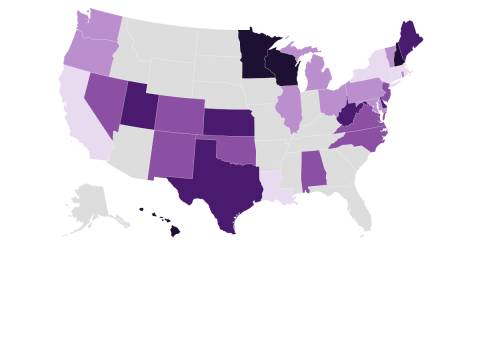This month, an estimated 16 million households receiving SNAP benefits in 32 states and Washington, DC, will see their benefits decrease by at least $95 monthly, according to estimates from the Center on Budget and Policy Priorities, a left-leaning research and policy institute.

On average, recipients will lose between 30% and 40% of their SNAP benefits, said Diane Whitmore Schanzenbach, an economist at Northwestern's Institute for Policy Research.
The decrease comes with the end of a Covid-19 emergency policy that increased SNAP benefits to the maximum level for every recipient. In 18 states, the additional benefits had already expired.
States with more households closer to the edge of that benefit cliff will see the largest average loss of benefits. At least four states, Hawaii, Minnesota, New Hampshire and Wisconsin, will see average household benefit losses of more than $200 each month.
But even for the households losing the minimum increase of $95, the decrease represents a substantial change to their monthly benefits. The impact will be felt across the board, Dottie Rosenbaum, director of federal SNAP policy at the Center on Budget and Policy Priorities, told CNN.
Although every SNAP participant will be affected, food scarcity does not affect every family equally. Black households and households with children are more likely to experience food scarcity, according to data from the US Census Bureau's Household Pulse Survey.
The emergency allotments had a clear impact: Whitmore Schanzenbach estimates they reduced food insufficiency by 9%.
With the end of this temporary boost, Rosenbaum says families already feeling the pressures of inflation are going to face more difficulty affording groceries.
In 2020 and 2021, food insecurity remained close to 2019 levels of about 10%, after an initial rise early in the pandemic according to CBPP.
It's pretty striking that when you look at the Great Recession, we saw increases in food insecurity that were pretty sizeable whereas during the pandemic, food insecurity held steady, and actually reached 20-year lows for families with children, in large part because of SNAP and other Covid relief efforts, Rosenbaum said.
Because the emergency allotments increased every SNAP recipient's benefits to the maximum amount, the households with higher incomes, previously receiving the minimum amount of SNAP benefits, will see the largest decrease in their monthly allowance. While these households are higher income than other SNAP recipients, they are still low income. For example, many elderly recipients receive less SNAP benefits because of Social Security income, Whitmore Schanzenbach said.
Although the research indicates that ending this program is likely to increase food insufficiency, short of keeping every SNAP recipient at the maximum benefit level indefinitely, there's no other option, Whitmore Schanzenbach said.
There's no way to end it without causing harm because starting it reduced harm, Whitmore Schanzenbach said. Fortunately, we have come out of this pandemic with a pretty strong economy, a very strong economy, so hopefully we'll be able to absorb the increased hardship.
